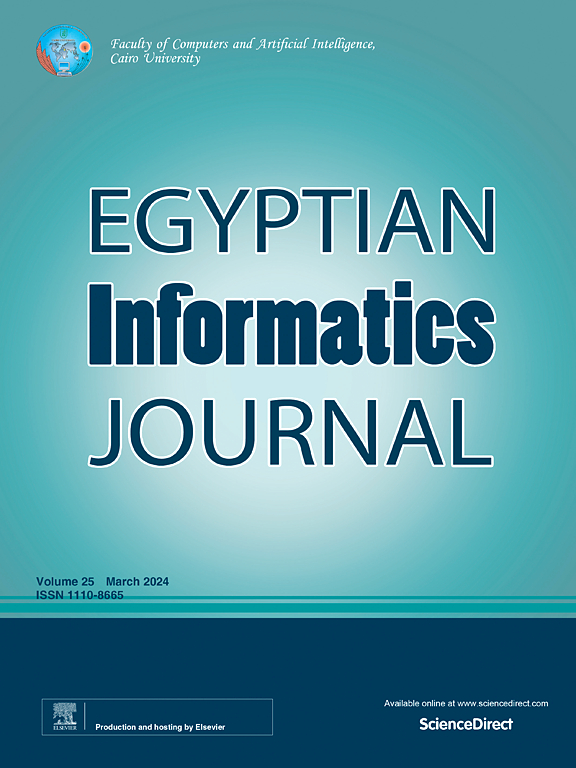A real-time system for monitoring and classification of human falls on stairs using 2.4 GHz XBee3 micro modules with a tri-axial accelerometer and KNN algorithms
IF 4.3
3区 计算机科学
Q1 COMPUTER SCIENCE, ARTIFICIAL INTELLIGENCE
引用次数: 0
Abstract
In this paper, a monitoring and classification system for human activities on stairs is presented. The contribution of this work is that, first, we develop the real-time wireless sensor monitoring system for measuring human motion data using 2.4 GHz IEEE 802.15.4 XBee3 micro modules as the low-power wireless modules, where the GY-521 accelerometer sensor is attached. Here, human activities on stairs, including stair ascent, stair descent, turning around, and falling, are mainly focused on preventing any dangerous accidents. Second, using the measured data, the signal vector magnitude (SVM) calculation, signal filtering using an exponentially weighted moving average (EWMA), feature extraction using the mean, maximum, interquartile range (IQR), standard deviation (STDEV), variance, and peak-to-peak (PTP) amplitude, and classification using the K-nearest neighbors (KNN) algorithm are applied. Experiments have been conducted in a home scenario. Results indicate that the proposed system can efficiently monitor human activities on stairs in real-time with reliable communications, as indicated by a strong level of the received signal strength indicator (RSSI), and a packet delivery ratio (PDR) of 100 % for both line-of-sight (LoS) and non-line-of-sight (NLoS) communications. Additionally, the proposed system using only one variance feature and the KNN classifier provides classification accuracy of 89 % for stair ascent, 70 % for stair descent, 95 % for turning around, and 100 % for falling (a critical or focused event); 88 % on average results. Thus, our system, which includes devices and classification algorithms, has the potential to monitor and categorize human falls on stairs via wireless communication, and it can be applied in practical situations.
采用2.4 GHz XBee3微模块,采用三轴加速度计和KNN算法,实现楼梯上人员摔倒的实时监测和分类系统
本文介绍了一种楼梯上人类活动监测与分类系统。本工作的贡献在于:首先,采用2.4 GHz IEEE 802.15.4 XBee3微模块作为低功耗无线模块,连接GY-521加速度计传感器,开发了用于测量人体运动数据的实时无线传感器监控系统;在这里,人类在楼梯上的活动,包括楼梯上、楼梯下、转身、跌倒,主要是为了防止任何危险事故的发生。其次,利用实测数据,计算信号矢量幅值(SVM),利用指数加权移动平均(EWMA)进行信号滤波,利用均值、最大值、四分位间距(IQR)、标准差(STDEV)、方差和峰对峰(PTP)幅度进行特征提取,并利用k近邻(KNN)算法进行分类。实验是在家庭场景中进行的。结果表明,该系统可以有效地实时监控楼梯上的人类活动,通信可靠,接收信号强度指标(RSSI)水平高,视距(LoS)和非视距(NLoS)通信的分组传送率(PDR)均为100%。此外,所提出的系统仅使用一个方差特征和KNN分类器,对楼梯上升提供89%的分类准确率,楼梯下降70%,转身95%,跌倒100%(一个关键或集中的事件);平均88%的结果。因此,我们的系统,包括设备和分类算法,有可能通过无线通信来监测和分类楼梯上的人类跌倒,并可以应用于实际情况。
本文章由计算机程序翻译,如有差异,请以英文原文为准。
求助全文
约1分钟内获得全文
求助全文
来源期刊

Egyptian Informatics Journal
Decision Sciences-Management Science and Operations Research
CiteScore
11.10
自引率
1.90%
发文量
59
审稿时长
110 days
期刊介绍:
The Egyptian Informatics Journal is published by the Faculty of Computers and Artificial Intelligence, Cairo University. This Journal provides a forum for the state-of-the-art research and development in the fields of computing, including computer sciences, information technologies, information systems, operations research and decision support. Innovative and not-previously-published work in subjects covered by the Journal is encouraged to be submitted, whether from academic, research or commercial sources.
 求助内容:
求助内容: 应助结果提醒方式:
应助结果提醒方式:


